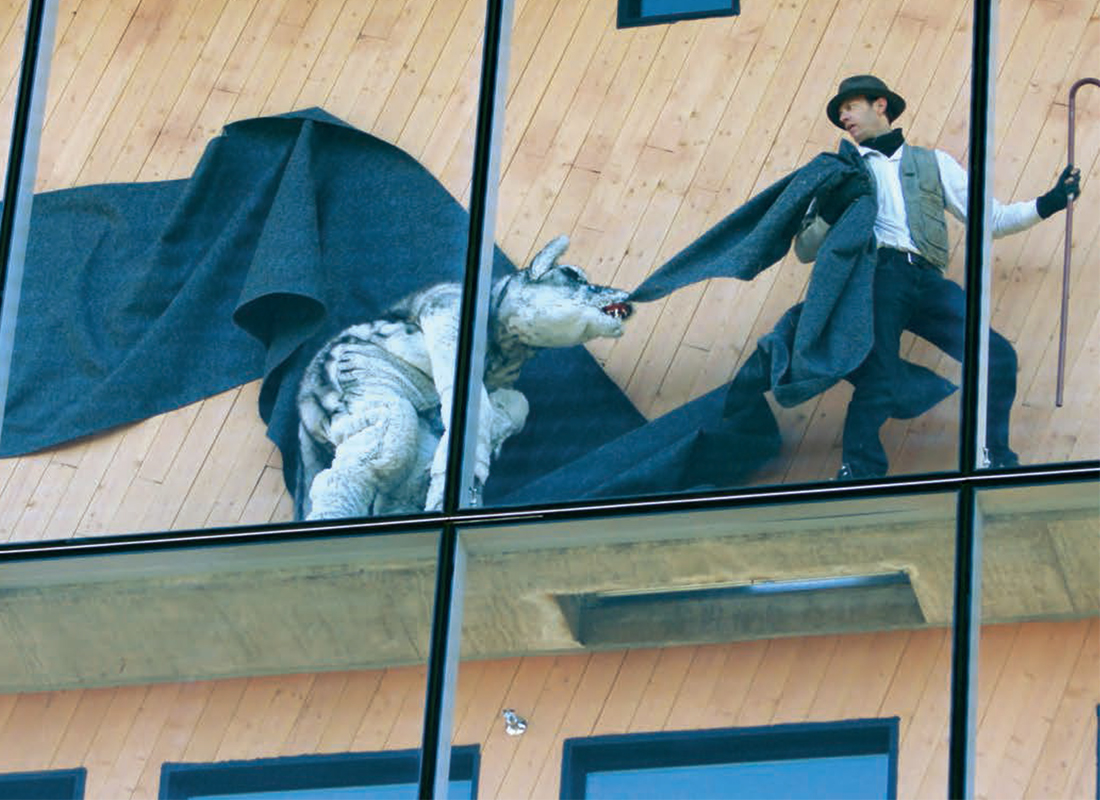New Problematics of the Ephemeral
Given that almost all public art projects are developed with an eye to their materials having a long encounter, over time, with the environment, the idea of duration is an integral factor. Exterior works in particular must be thought of in terms of their preservation, their ability to resist bad weather. This is a classic problem of public art, one that remains inherent in the conception of such works today, but it is also a factor in the various stages of their post-production installation.
One could point to the example of two of Valérie Blass’ works that were part of the group exhibition Configurations,1 the Public Art Fund put together in Brooklyn during the autumn of 2012. These works were installed in the hall of an office building in the MetroTech complex rather than in the nearby park where they originally were to be shown among other sculptures. Even though the artist had anticipated the deterioration risks of Orca Gladiator (2012) and Meuble Mécanique (2012) in an outdoor setting, the Public Art Fund only understood the extent of that risk during the installation process — a few days before the opening — and decided to move them indoors. Faced with a classic problem, choose a classic solution. Despite this, the Public Art Fund generates many ephemeral public art projects, which appears to run contrary to the logic governing Quebec’s 1% policy, targeting an enduring integration of art and architecture. In the case of the Configurations show — ending in September 2013 — the need to reduce possible damage had a precise time limit: about ten months. Other Public Art Fund exhibitions are far more representative of this trend toward the ephemeral, such as Tatzu Nishi’s Discovering Columbus (2012). His short-term installations — generally lasting about ten weeks — allow the public to see unusual, in situ views of older sculptures and monuments.
If such openness to ephemeral public art is less current in Quebec, the first performative 1% work, presented in December of 2012, highlights the need to question the permanence of works as an a priori condition for integrating art into architecture. Over a period of five years, Thierry Marceau’s performance project will liven up the 2-22 building in downtown Montreal. Certainly, the medium for this “1%” work is an historical first, but the fact that it will, in certain ways, disappear after its fifth iteration should also be seen as a significant change. There is no question here of what might eventually replace, or continue, Marceau’s work after its final presentation in 2017, but rather a consideration of one of the contributions made by this performative infiltration: engagement with the ephemeral. The question could be posed in this way: if temporary public art can be funded by the 1% programme in response to the specificities of performance, why would it not be possible for another medium? The various projects the Public Art Fund oversees demonstrate the pertinence of integrating work, most often sculpture or installations, into public space for more or less limited periods of time. Are we headed towards a greater flexibility in the choice of 1% works generally? Would it be possible to consider non-performative works whose ephemeral nature arises from their conceptual, or more material, requirements in the context of “art integrated into architecture” competitions?
There are many logistical implications here: we could see a growth in ephemeral public art, regardless of media. The fact that 1% works are funded by the public purse complicates the question, public art already being subject to astounding controversies. The idea that a public work is permanent seems to make the idea a better investment, as if quantitative concerns collectively overshadow qualitative ones. Although the nonspecialized public seems unable to deny the impossibility of a performance work being permanent, popularizing the importance of temporary works of a strictly conceptual nature to the detriment of “long lasting” ones of lesser quality that compete in the same competition would be a harder sell. Of course, this is only a hypothesis, and the decision in favour of a performance work for the 2-22 building will enable a broadening of the artistic parameters presently restricting 1% competitions.
Translated by Peter Dubé
Aseman Sabet is pursuing a doctorate at Université de Montréal. Her thesis focuses on the dialogue between the senses and the synaesthesia in the 18th century aesthetic discourse. She also works as an independent curator and writes for various contemporary art publications. Her research investigates the typology of anthropological approaches and, more specifically, the resurgence of tactility in contemporary art. She lives and works in Montreal.
-
The exhibition presented the work of Valérie Blass, Katinka Bock, Esther Kläs and Allyson Vieira.





